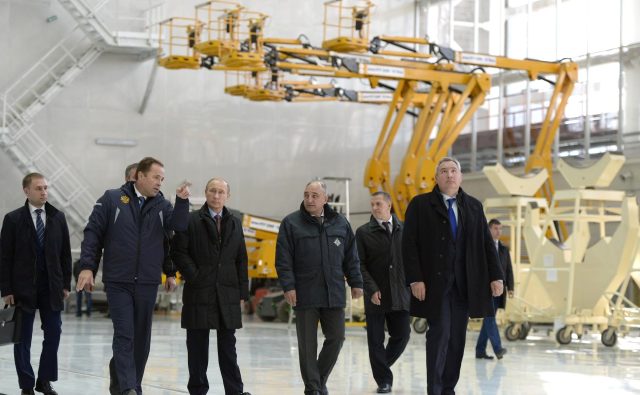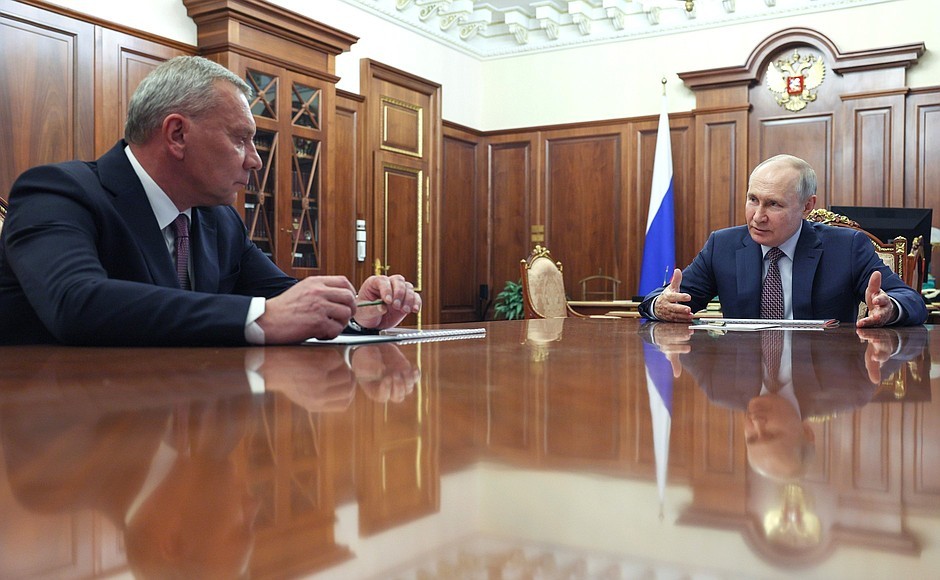
On Saturday, the Russian space program lost the Luna 25 spacecraft, a relatively small vehicle that was due to land on the Moon this week. After a problem with the spacecraft's propulsion system, instead of entering a low orbit around the Moon, it crashed into the lunar surface.
The Russian mission to the Moon was one of several spacecraft that were to attempt a landing on the Moon in the next six months, alongside probes from Japan, India, and the United States. In this sense, Russia is just one of many nations participating in a second space race back to the Moon, alongside nations and private companies alike.
But unlike NASA, China, India, and several companies in the United States and Japan, the Luna 25 effort does not presage the coming of a golden era of exploration for Russia. Rather, it is more properly seen as the last gasp of a dying empire, an attempt by the modern state of Russia, and President Vladimir Putin, to revive old glories.
And now it has failed. Here's why this is such a death knell for Russia's civil space program under Putin's leadership.
The country’s space technology dates to Apollo
The first Soyuz spacecraft launched in 1967, two years before the first Apollo Moon landing. The crew vehicle served the Soviet space program through 1991 and since then has been a mainstay for the country's large space corporation, Roscosmos. The Soyuz is a hardy, generally reliable vehicle that NASA counted on for crew transport from 2011 to 2020, after the space shuttle's retirement and before SpaceX's Crew Dragon came into service.
The Soyuz spacecraft, as well as a lot of the country's other satellites, launches into orbit on the Soyuz rocket. This vehicle dates back even a bit further, to 1966. Russian engineers have modified and modernized both the spacecraft and rocket over time, but they remain essentially the same space vehicles.
There's nothing wrong with aging technology that works. However, there have been some issues of late with leaks and other problems that have raised serious questions about quality control and the ability of the Russians to manufacture these vehicles.
But for now, they work. The bigger problem is that there is precious little new hardware in the pipeline. A modern replacement for the Soyuz spacecraft, "Orel," is perpetually five to seven years away from flight, which essentially means never. A replacement space station, ROSS, remains in the vaporware stage of development. And then there is the Soyuz-5 rocket, a three-stage rocket powered by RD-171 engines that will burn kerosene fuel and compete with SpaceX's Falcon 9 rocket on price. This vehicle, too, has a future launch date that keeps slipping.
Putin puts his prestige on the line
Before the launch of Luna 25, Putin made it clear that this mission was important for Russia as a signal that the country was returning to great power status. He met with the current head of Roscosmos, Yuri Borisov, on June 30 before the launch to hear more about the lunar mission.
The symbolism of the Russian space program is important to the nation, as achieving "firsts" such as the first satellite, man, and woman in orbit six decades ago marked key geopolitical wins for the Soviet Union during the Cold War against the United States. Since then, Russians have expected their country to be doing important things in space.

Sometimes such strength has been difficult to project, especially since Russia is flying the same vehicles as it did during Leonid Brezhnev's tenure as the Soviet ruler, and has only flown to the International Space Station for a quarter of a century. Desperate for an achievement on the 60th anniversary of Gagarin's flight in 2021, Russia's answer was to film The Challenge, billed as the "first" feature film made in space.
Critically, Luna 25 was to mark the reopening of Russia's interests on the Moon. It was a relatively modest mission, with a mass of about 1 metric ton, and far smaller than the Luna missions the Soviets sent to the Moon half a century ago. But it was the nation's first trip back to the Moon in 46 years and would at least allow Putin to credibly claim that Russia was back.
Article From & Read More ( The failure of Luna 25 cements Putin’s role as a disastrous space leader - Ars Technica )https://ift.tt/rnKcluf
Science
No comments:
Post a Comment